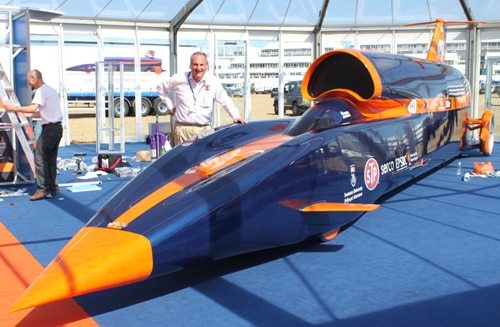
The Dangers of Commercial Drones
July 16, 2014
Current Events
It’s a novel idea: purchase a DVD box set or set of kitchen utensils with the new “Amazon Prime Air” service, but instead of waiting for UPS to deliver it to you in about a week, a flying drone drops it on your doorstep in under an hour. Neat, huh? Not so fast!
The FAA has legitimate concerns about these small and unmanned aircraft, after a recent close call involving a drone and a commercial airliner nearly ended in catastrophe.
Jim Williams, the head of the FAA’s Unmanned Aircraft Systems (UAS) office, believes drones for commercial use is extremely unsafe, referencing a pair of incidents in which drones caused injuries to people on the ground.
One incident occurred at the Virginia Motor Speedway, where an “unauthorized, unmanned aircraft” crashed into a stand full of spectators. The other came from a pilot’s March 22nd report of “a near midair collision” with a drone near the airport in Tallahassee, Florida. According to the commander of U.S. Airways Flight 4650 from Charlotte to Tallahassee, the craft appeared to be small, camouflaged, “remotely piloted” and about 2,300 feet up in the air at the time of the incident.
Current Events
“The pilot said that the UAS (drone) was so close to his jet that he was sure he had collided with it,” Williams said. “Thankfully, inspection to the airliner after landing found no damage. But this may not always be the case.”
The problem with unmanned drones for commercial use is that no one is inside at the controls to avoid a mid-air catastrophe. A helicopter, crop duster or (parachute) jump plane can swerve out of harms way during a potential incident. A drone can not. Also, Amazon Prime Air might seem like a great idea for smaller cities and rural areas, but a city with power lines or skyscrapers could be problematic. Who wants a package-toting drone dropping out of the sky and onto their unsuspecting head?
However, Amazon says with it now on its eighth- and ninth-generation drone prototypes, including some that can travel more than 50 miles an hour and carry 5-pound packages, the drones are safe and should be allowed to commence with major testing in the actual sky.
“Amazon Prime Air is one invention we are incredibly passionate about,” Paul Misener, Amazon’s vice president of global public policy, said. “We believe customers will love it, and we are committed to making Prime Air available to customers world-wide as soon as we are permitted to do so.”
He added, “One day, seeing Amazon Prime Air will be as normal as seeing mail trucks on the road today.”
Current Events
Interestingly, the FAA recently approved the first commercial “over land” drone authorized for use in a remote part of Alaska by the British Petroleum oil company. BP plans to use the unmanned aircraft to survey roads, pipelines and other equipment at Prudhoe Bay. This, however, is a far cry from unmanned drones carrying packages while flying through major U.S. cities.









Interestingly, the FAA recently approved the first commercial "over land" drone authorized for use in a remote part of Alaska by the British Petroleum oil company. BP plans to use the unmanned aircraft to survey roads, pipelines and other equipment at Prudhoe Bay. This, however, is a far cry from unmanned drones carrying packages while flying through major U.S. cities. [……]
You got that right!!!
Count me among those who think that the use of commercial drones is an extremely dangerous (and STUPID) idea.